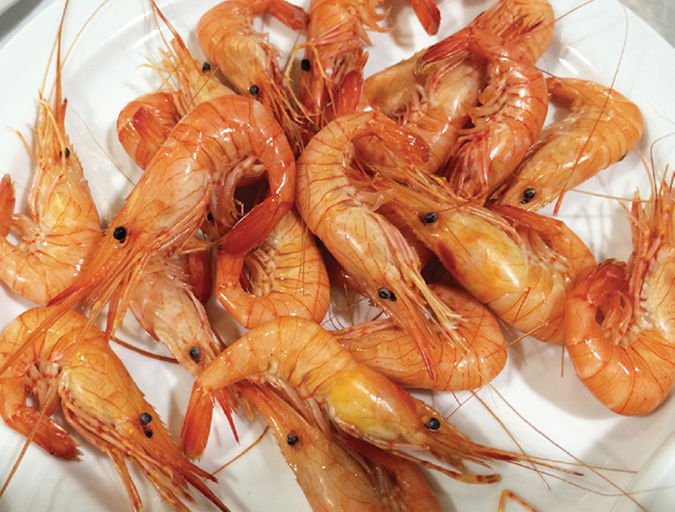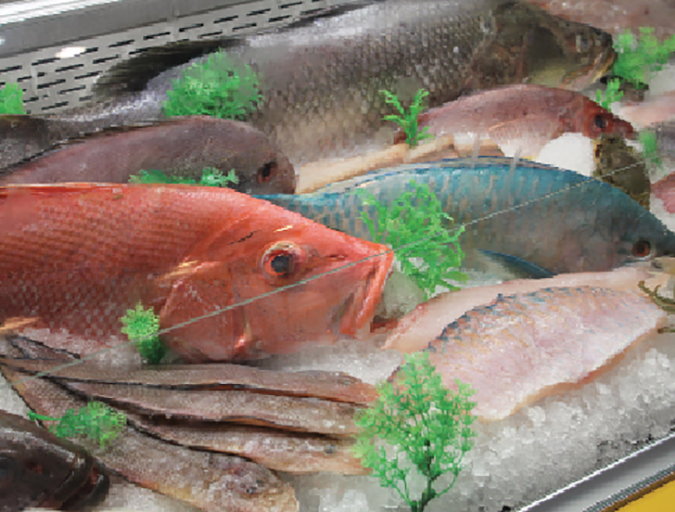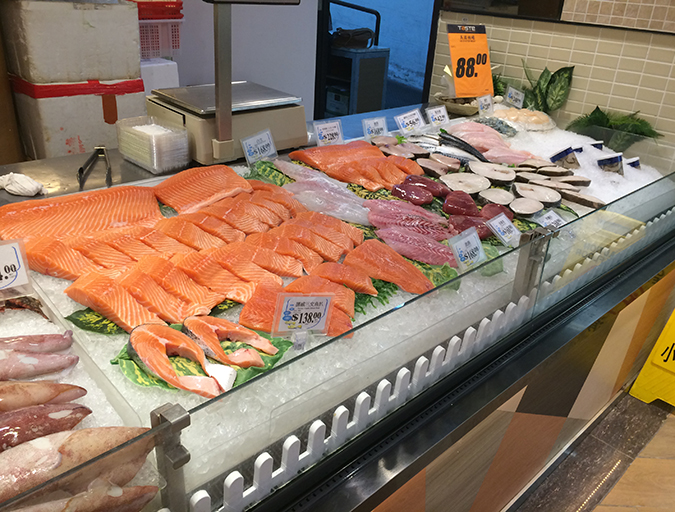Significant, widespread undernutrition, as well as adult overweight and obesity

The new normal, according to the latest Global Nutrition Report, launched June 14, 2016, is that 44 percent of the 129 countries surveyed are currently experiencing serious levels of both under nutrition and adult overweight and obesity.
The GNR aims to assess progress, improve accountability for meeting global commitments, and recommend actions for government and key stakeholders to end all forms of malnutrition by 2030. The Report is the only independent and comprehensive annual review of the state of the world’s nutrition and it aims to be a beacon, providing examples of change and identifying opportunities for action. This year’s report focuses on the theme of making – and measuring – SMART commitments to nutrition and identifying what it will take to end malnutrition in all its forms by 2030.
Iron deficiency and anemia
One of the major concerns is that a massive 1.6 billion people globally suffer from anemia, a condition strongly connected to iron deficiency – and one of the symptoms of a global nutrition crisis that disproportionally affects women. Indeed, anemia afflicts twice as many women as men – nearly one in three women and girls worldwide – and contributes to one-fifth of all maternal deaths. Interested readers can check Iron status biomarkers in iron deficient women consuming oily fish versus red meat diet by S. Navas-Carretero et al. (http://healthyeating.sfgate.com/kind-seafood-high-iron-2896.html)
Iron is required for a number of key functions in the body including transporting oxygen in the blood and in the muscles and for red blood cell production. Additionally, iron is involved in the electron transport system. This system controls the release of energy from cells. Clearly you cannot have a healthy immune system without iron and inadequate iron in the body can impair aerobic metabolism by decreasing the delivery of oxygen to tissues and reducing the capacity of muscles to use oxygen for the oxidative production of energy.
Of course the first food people think of is red meat and spinach (thank you Popeye) when thinking about iron; yet seafood is one of the major natural sources. Specifically, shellfish, seaweed and fish are all superb choices for dietary iron. Here are some examples:
- 6 medium oysters provide about 5 milligrams (mg) of iron
- 3/4 cup of fried clams contains 3 mg
- Shrimp are relatively high in iron, with 1.3 mg in eight large shrimp.
- Lobster with 0.5 mg in 1 cup of cooked lobster
- Crab with 0.7 mg in a 6-ounce serving of steamed crabmeat
- Canned salmon or tuna (6-ounce serving) contains about 1.5 mg of iron
- 6-ounce serving of cooked, farmed trout provides about 0.6 mg of iron
- Most types of fish contain iron, providing up to about 10 percent of the Recommended Daily Allowance (RDA) in an average serving
- Raw kelp, sometimes used in salads or other dishes, contains about 0.5 mg of iron in a quarter-cup serving
Importantly for those of you that love sushi you need to know that Japanese seaweed called laver or nori, which is roasted and used in sheets in many Asian dishes, is also a great source of iron, with about 0.5 mg of iron in 10 sheets.

Also important in the red meat versus seafood food fight, a report was published that concluded “an oily fish diet compared to a red meat diet does not decrease iron status after eight weeks in iron deficient women.” This is important as it has always been “old school” thinking that red meat was superior. This report was done because it is now considered essential to reduce consumption of red meat and increase that of fish, in order to prevent the risk of developing cardiovascular disease.
Need to invest in better nutrition
Back in 2012 the World Health Assembly sanctioned a target to decrease the rate of anemia by 50 percent by 2025. The GNR highlights that at the current rate of progress, this target will not be reached until 2124. This is why we must invest in better nutrition now. It is essential that we can offer a better future for girls and women everywhere well into the next century.
The report also brings home the point strongly that we can no longer treat gender discrimination and malnutrition as separate issues. The two are inextricably linked, they say and they reinforce each another in a pattern that touches women at every stage of their lives. Malnutrition – in all of its forms – is both a cause and an effect of the profound power imbalance in gender.
Annually, 16 million adolescent girls give birth, most in low- and middle-income countries. If a mother lives in an area where stunting (see http://www.who.int/nutgrowthdb/about/introduction/en/index2.html) rates are high and she is in her mid-teens, her child is more likely to be stunted – and thus more susceptible to disease and largely irreversible cognitive underdevelopment, adversely affecting their ability to benefit from education and reach their full potential. From that point it is very difficult to have what might be considered a normal life.
These children are destined for the poverty trap and have a higher risk of developing chronic diseases such as diabetes and hypertension later in life, if they survive their childhood. With societal and economic biases against women in many countries, these early life circumstances place girls at an even more severe disadvantage. This vicious cycle then repeats itself; these disempowered and malnourished women give birth to stunted babies, perpetuating the cycle of inequality.
Experts like Ngozi Okonjo-Iweala and Lawrence Haddad have highlighted that it is critical that we promote early and immediate breastfeeding which they say is an incredibly powerful tool against both stunting and obesity.

In a world where we have been taught “women and children first,” in many scenarios it is noted that in many countries, women eat last in the family, reducing their chances of getting the right nutrition. Maternity and breastfeeding provisions are also weak, making it difficult for women to nurse their babies. The report suggests that behavior-change programs, communication and role modeling can all be helpful in weakening the grip of harmful social norms concerning nutrition and gender.
The co-chair of the Global Nutrition Reports (GNR) Independent Expert Group, Corinna Hawkes, is reported as saying “Malnutrition literally means bad nutrition. That’s anyone who isn’t adequately nourished, including the obese and overweight.”
Malnutrition has grave global consequences
Malnutrition is a condition that directly affects one in three people globally. Malnutrition manifests itself in many different ways: as poor child growth and development; as individuals who are skin and bone or prone to infection; as those who are carrying too much weight or whose blood contains too much sugar, salt, fat, or cholesterol; or those who are deficient in important vitamins or minerals. Malnutrition and diet are by far the biggest risk factors for the global burden of disease: Every country is facing a serious public health challenge from malnutrition.
There are serious economic consequences as a result of malnutrition. The report suggests losses of 11 percent of gross domestic product (GDP) every year in Africa and Asia, whereas preventing malnutrition delivers $16 in returns on investment for every $1 spent. During the last 10 years, momentum around nutrition has been gaining ground, with governments and stakeholders around the world acknowledging nutrition as a key component of development.

At the United Nations in 2015, the Sustainable Development Goals enshrined the objective of “ending all forms of malnutrition,” challenging the world to think and act differently on malnutrition – to focus on all its faces and work to end it, for all people, by 2030. While the majority of the world’s countries have agreed on targets for nutrition, it is clear that despite some progress in recent years the world is off track to reach its original targets.
Perspectives
Few challenges facing the global community today match the scale of malnutrition. To win this war collaboration is a necessity. Focusing on change in the treatment of women and children is essential. Seafood, particularly aquaculture, has a massive role to play in providing some of the answers.
Author
-

Roy D. Palmer, FAICD
GILLS
2312/80 Clarendon Street
Southbank VIC 3006 Australia
www.seafoodprofessionlas.org
Tagged With
Related Posts

Intelligence
Warning: Shrimp salad may contain shrimp
Crustaceans, fish and any food that contains protein have the potential to cause allergic reactions in some individuals. To protect consumers, seafood businesses must stay abreast of changing regulations.

Intelligence
Food is abundant, yet people are starving
While significant numbers of people are undernourished, an increasing number of people are overweight. The divide between recommendations and results is marked, so we must learn more about food production and change our behaviors.

Intelligence
Healthy populations wanted: U.S. guidelines get it right
The 2015 "Dietary Guidelines for Americans" suggest eating at least 8 ounces of seafood per week, and advise pregnant and breastfeeding women to eat 8-12 ounces weekly. It's about time.

Intelligence
For healthy eating, we are what we allow
Many current eating habits have negative results for our health, lending credence to “you are what you eat.” Eating habits can be changed, and increasing seafood consumption can provide numerous health benefits, including as a significant source of critical micro-nutrients, vitamins and minerals. Seafood should have its own spot in our dietary food pyramid.

